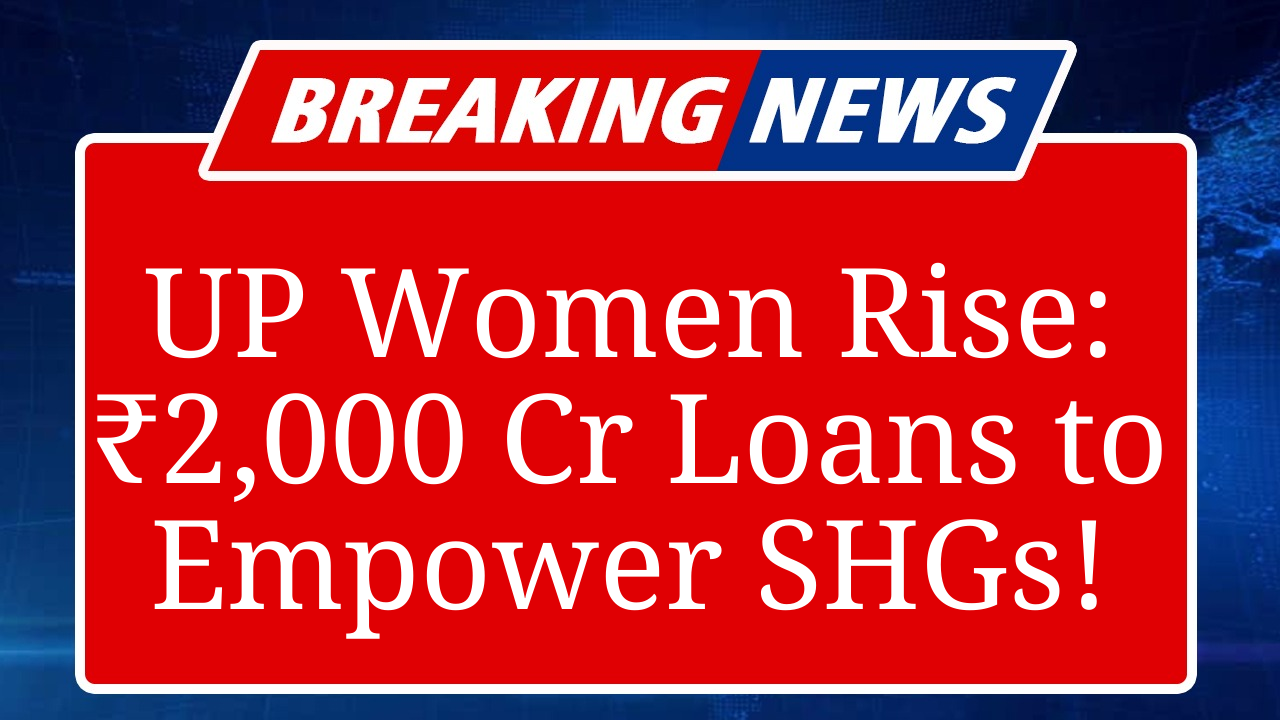Over 1.5 lakh women in Uttar Pradesh will benefit from new loan schemes under Self-Help Groups (SHGs), aimed at fostering entrepreneurship and financial independence. The state government has allocated ₹2,000 crore to provide low-interest, collateral-free loans up to ₹5 lakh, targeting rural and semi-urban women to start or expand businesses, enhancing their economic and social empowerment.
Uttar Pradesh Empowers Women Through SHG Loan Initiatives
In a significant push for women’s empowerment, the Uttar Pradesh government has rolled out new loan schemes under the Self-Help Group (SHG) framework to support over 1.5 lakh women across the state. Launched in August 2025, the initiative aims to bolster financial independence and entrepreneurship among women, particularly in rural and semi-urban areas, by providing accessible, low-interest, collateral-free loans.
The state has allocated ₹2,000 crore to facilitate loans of up to ₹5 lakh for SHGs under the Deendayal Antyodaya Yojana-National Rural Livelihood Mission (DAY-NRLM). These loans, offered at a subsidized interest rate of 4% per annum, are designed to help women start or scale up micro-enterprises such as tailoring units, food processing, handicrafts, and small retail ventures. The scheme builds on the success of earlier SHG programs, which have been lauded for their high repayment rates of over 96%, as noted in the Economic Survey 2022-23.
Chief Minister Yogi Adityanath, while announcing the scheme in Lucknow, emphasized its role in transforming rural economies. “Our goal is to make every woman associated with SHGs a ‘Lakhpati Didi,’ earning at least ₹1 lakh annually,” he stated. The initiative includes partnerships with public sector banks, regional rural banks, and e-commerce platforms like Meesho to ensure market access for SHG products, enhancing their revenue potential.
As of September 2025, Uttar Pradesh hosts over 12 lakh SHGs, with 88% comprising all-women groups, covering nearly 1.4 crore households. The new scheme prioritizes marginalized communities, with 30% of funds reserved for women from Scheduled Castes and Tribes. The loans are disbursed through the SHG Bank Linkage Project (SHG-BLP), which has already facilitated ₹6.25 lakh crore in cumulative loans nationwide since 2014, with non-performing assets at a mere 2.08%.
The initiative also includes skill development and financial literacy programs to ensure effective utilization of funds. A recent study in Karnataka highlighted a challenge where 60-70% of SHG loans were diverted for personal use due to poverty. To address this, UP’s program mandates training workshops and credit counseling to guide women in managing loans for business purposes.
Banks like the State Bank of India and Punjab National Bank are actively participating, offering streamlined application processes with minimal documentation. The scheme also leverages digital platforms, with Dual Authentication technology enabling SHGs to transfer funds directly to members’ accounts, reducing cash-handling risks and promoting financial inclusion.
In districts like Varanasi and Gorakhpur, SHGs have already started utilizing these loans to establish ventures like organic farming cooperatives and handloom units. For instance, the Saraswati SHG in Varanasi used a ₹3 lakh loan to set up a weaving unit, employing 15 women and generating monthly revenues of ₹50,000. Such success stories underscore the transformative potential of the scheme.
The government has also introduced monitoring mechanisms to track loan usage and ensure funds are directed toward income-generating activities. District-level credit counseling centers are being established to provide ongoing support, addressing issues like market access and product marketing, which have historically hindered SHG success.
With India’s SHGs recognized as the world’s largest microfinance project, Uttar Pradesh’s latest initiative is a step toward achieving the national target of 10 crore SHG members by 2027. The state’s focus on empowering women through financial access, skill-building, and market linkages is poised to reshape the socio-economic landscape, fostering a new era of self-reliance for women.
Disclaimer: This article is based on recent reports, government announcements, and data from credible sources like The Hindu, Down To Earth, and Economic Survey 2022-23. Information is accurate as of September 2025, but readers are advised to verify eligibility and terms with relevant authorities before applying for loans.

